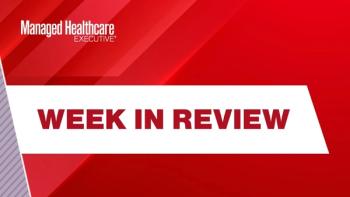
Demand Up, Supply Down = Adderall Shortage
Short-term manufacturing problems are happening as the demand for Adderall and other stimulant medications for ADHD have increased. Data from Arrive Health show a marked increase in ADHD medication prescriptions for people in their 30s.
Adderall, one of the main drugs used to treat attention deficit hyperactivity disorder (ADHD), is increasingly short supply as demand increases and some manufacturers struggle with producing the drug.
There have been media reports of shortages for months, but the
Teva Pharmaceutical Industries, one of the main manufacturers, has been hit by labor shortages, according to several news sources, and the FDA announcement mentioned that the company is “experiencing ongoing intermittent manufacturing delays.”
The
Apart from the supply issues, the demand for Adderall and other drugs for ADHD has been surging for years. In 2018
Researchers and others are just now getting a handle on how the COVID-19 pandemic has affected the demand for ADHD medications and Adderall more particularly. One of the main questions is whether telehealth companies such as Cerebral that specialize in mental health have led to overprescribing of medications for ADHD and possibly other conditions. The Department of Justice and the Federal Trade Commission are investigating
In June, Trilliant Health, a healthcare data analytics company, issued a
In early 2020, Arrive Health’s data show an uptick in prescriptions for many different types of medications, he said. “There were huge spikes in pending medication orders at the beginning of the (COVID-19) pandemic, across all drugs. And that was because patients were afraid to go to their doctors, so they were calling in as many orders (as they could ) or they were ordering large quantities.”
Stimulant prescriptions for ADHD (Arrive Health doesn’t have data yet on Adderall and particularly types of ADHD medications) were part of that initial increase but then rose slowly through 2020 and 2021 before soaring again at the beginning of this year, Rosenberg said.
Arrive Health’s data show that almost 2.5 million — approximately 18%— of the 14 million prescription for mental health and behavioral health medications between Feb. 1, 2020, and Sept. 30, 2022, were for stimulant medication for ADHD.
“Antianxiety agents — no significant increases, actually slight decreases over the past two years,” said Rosenberg. “Antidepressants, similar, mostly (a) straight (trend). Antipsychotics are mostly straight. The ADHD meds are really the only one that has seen consistently increased trend.”
Arrive Health’s data also show a notable increase of prescriptions of ADHD drugs for people ages 30 to 39. Between January 2020 and September 2022, the proportion of pended prescriptions for ADHD drugs in that age group relative to all pended prescriptions increased from 2.4% to 5.5%.
Rosenberg shared some of the prevailing beliefs about the rising number of ADHD medications, namely, that more people are working from home and therefore getting prescriptions to cope with the distractions that come with working at home.
He also pointed to the growing awareness of mental health.
“There’s a trend to discuss mental health and mental health awareness with professionals — with your doctors, with an internist, with a psychiatrist,” Rosenberg said. “I think as people are more aware of what is going on in their own minds, they’re able to identify that they may need help and maybe looking to medication.”
Newsletter
Get the latest industry news, event updates, and more from Managed healthcare Executive.

















































